What to Know About Window Blinds and Shutters
Experts weigh in on how and where to use these versatile window coverings
Blinds and shutters could be considered the workhorses of window treatments. These “hard” treatments constructed of wood, composite and vinyl work well in home designs ranging from traditional to modern. When categorizing window treatments, blinds are often grouped with shades, but there are some big differences in how they function and are constructed. Unlike shades, blinds and shutters have slats that can be tilted open to pinpoint the amount of natural light you want to bring in.
Blinds tend to be cheaper than shutters, especially for hardwood, and there are fewer design options for both compared with shades. But what they lack in options, blinds and shutters make up for in functionality. “With blinds you can control your light. If you want to open your windows at night, for example, you can tilt but still get airflow,” says Sheri Stouffer, owner of Finishing Touches in Denver. Shutters provide good insulation, are versatile and can be made to fit a variety of window shapes and even French doors and sliding glass doors. Here’s a guide to options for blinds and shutters and what design professionals have to say about them.
Blinds tend to be cheaper than shutters, especially for hardwood, and there are fewer design options for both compared with shades. But what they lack in options, blinds and shutters make up for in functionality. “With blinds you can control your light. If you want to open your windows at night, for example, you can tilt but still get airflow,” says Sheri Stouffer, owner of Finishing Touches in Denver. Shutters provide good insulation, are versatile and can be made to fit a variety of window shapes and even French doors and sliding glass doors. Here’s a guide to options for blinds and shutters and what design professionals have to say about them.
Shutters. Angled slats called louvers open and close by using a slender tilt rod in front or back that runs the length of the shutters. Some shutters have a split tilt rod that lets you open the top and bottom separately. Shutters with a hidden or invisible tilt rod built into the frame or hidden in the back open and close by holding one louver to control all of them. Wider 3- and 4-inch louvers are a good choice for larger windows. Keep in mind that a wider louver will let more light in, while a narrower louver will offer more privacy when the slats are all open.
Unlike blinds and shades, shutters can’t be raised all the way open but are usually hinged so an entire shutter panel can be opened. The shutters above from Sunburst Shutters & Window Fashions have front tilt rods and are made of Polywood, a solid polymer that’s a good choice for a bathroom because it’s moisture-resistant, rigid and durable. Each shutter panel has weatherstripping for insulation and energy efficiency.
Shop for window treatments on Houzz
Unlike blinds and shades, shutters can’t be raised all the way open but are usually hinged so an entire shutter panel can be opened. The shutters above from Sunburst Shutters & Window Fashions have front tilt rods and are made of Polywood, a solid polymer that’s a good choice for a bathroom because it’s moisture-resistant, rigid and durable. Each shutter panel has weatherstripping for insulation and energy efficiency.
Shop for window treatments on Houzz
Blind Materials and Types
Wood. Similar to hardwood floors, blinds made of real hardwood can add a natural, elegant feel to a room. Wood blinds come in a variety of grains and finishes and are more lightweight than faux wood blinds, though they tend to be more expensive.
Real wood blinds like the ones shown here from The Shade Store are available in basswood, a soft and lightweight hardwood commonly used for wood blinds.
Wood. Similar to hardwood floors, blinds made of real hardwood can add a natural, elegant feel to a room. Wood blinds come in a variety of grains and finishes and are more lightweight than faux wood blinds, though they tend to be more expensive.
Real wood blinds like the ones shown here from The Shade Store are available in basswood, a soft and lightweight hardwood commonly used for wood blinds.
These hardwood blinds from Smith & Noble have a rustic gray finish. The company offers a choice of louver width from 1⅜ inches to 2½ inches for its wood blinds and also offers decorative fabric tape to cover the string ladder.
The wood blinds shown here in a new-build home in Austin, Texas, were chosen by the pros at Ashby Collective, who selected all the home’s finishes and were tasked with bringing the outdoors inside. Located on the home’s ground level, the blinds help obscure the view in from the outside while allowing a view out from the inside. “We also loved the modernist, Japanese-looking texture it added to the window in addition to the shadow play it has on the home throughout the day,” designer Christina Simon says.
The team chose blinds instead of draperies so the corner architecture wouldn’t be obstructed. “We liked the adjustable privacy for the area that obscures the view in from ground level but from inside allows more access to the view outdoors. It gives you more tree visuals in addition to privacy, thereby accentuating the treehouse effect,” Simon says.
The team chose blinds instead of draperies so the corner architecture wouldn’t be obstructed. “We liked the adjustable privacy for the area that obscures the view in from ground level but from inside allows more access to the view outdoors. It gives you more tree visuals in addition to privacy, thereby accentuating the treehouse effect,” Simon says.
During a home remodel in Carlsbad, California, Window Spaces installed these attractive wood blinds with decorative ladder tape.
Faux wood. Imitation wood blinds are typically made from wood composite material or vinyl and are usually less expensive than real wood. They might have an embossed wood grain. They tend to be durable and impervious to moisture so are a good choice for bathrooms, laundry rooms and kitchens. The blinds shown here from Budget Blinds are made from a durable polymer material with UVA inhibitors that the company says prevents cracking, chipping, peeling and yellowing.
These faux wood blinds with 2½-inch slats in an Indianapolis kitchen are from Zinga’s. The company says the metal headrails it uses for its faux wood blinds won’t sag or crack.
Metal. Metal blinds are usually aluminum and tend to have narrow slats measuring half an inch to 2 inches wide. Typically less expensive than wood or faux wood, they’re resistant to moisture so a good choice for kitchens and bathrooms. Perhaps you remember mini blinds from your childhood; those and micro blinds measuring half an inch to an inch wide are still around and today’s versions are usually vinyl or metal. The aluminum blinds with 2-inch-wide slats shown here from The Shade Store are proof that metal blinds can be an attractive design element; these come in four finishes, including the Champagne finish seen here.
Hybrid or zebra. Sometimes called dual blinds and often considered a shade, this style has fabric or polymer vanes with a fabric backing, creating an alternating light-dark view and usually operated by a motor, a wand or with a continuous loop cord to open and close the vanes. The fabric backing varies from sheer to blackout. In this bathroom in Golden, Colorado, designer Sheri Stouffer of Finishing Touches chose Hunter Douglas Pirouette sheer shades with a blackout lining for privacy and to cut down on heat transfer.
Vertical and panel. Today’s vertical blinds put yesterday’s clunky versions to shame. Vertical blinds have individual slats that run from a track at the top of the blind and usually can be tilted by turning a wand. Panel blinds glide open and closed but don’t always tilt. During installation you can choose whether the blinds will stack on the left, right or in the middle when opening.
Modern vertical blinds come in a variety of styles and materials, including wide panels made of fabric that stylishly overlap, as seen here. Vertical blinds are useful for large windows and sliding glass doors, which may be too wide for a horizontal blind. Shown here is The Shade Store’s panel track vertical blind, available in multiple materials and either cordless, controlled by a steel chain or motorized.
Modern vertical blinds come in a variety of styles and materials, including wide panels made of fabric that stylishly overlap, as seen here. Vertical blinds are useful for large windows and sliding glass doors, which may be too wide for a horizontal blind. Shown here is The Shade Store’s panel track vertical blind, available in multiple materials and either cordless, controlled by a steel chain or motorized.
Products like Hunter Douglas’ Luminette privacy sheers are a hybrid window treatment that combines blinds and sheer curtains. They’re a useful solution for large windows and doors. You can rotate the 3½-inch fabric vanes for privacy and light control, and the fabric offers UV protection from the sun. They’re also available in a vertical style.
What to Know About 5 Popular Types of Window Shades
What to Know About 5 Popular Types of Window Shades
Shutter Materials and Types
Wood. Real wood shutters add elegance and an organic, natural feel to a space. They tend to be more expensive than faux wood composite or vinyl shutters and can warp in a damp environment, so they should be avoided in bathrooms. Like composite and vinyl shutters, you can choose the width of the louver.
Acadia Shutters installed the shutters seen here on French doors in a newly constructed home in Brentwood, Tennessee. They’re intended to coordinate with the home’s custom front door. They’re from the company’s line of basswood plantation-style stained shutters, available in a variety of stains and with 2½-, 3½- or 4½-inch-wide louvers. The custom cutout gives easy access to the door handle.
Wood. Real wood shutters add elegance and an organic, natural feel to a space. They tend to be more expensive than faux wood composite or vinyl shutters and can warp in a damp environment, so they should be avoided in bathrooms. Like composite and vinyl shutters, you can choose the width of the louver.
Acadia Shutters installed the shutters seen here on French doors in a newly constructed home in Brentwood, Tennessee. They’re intended to coordinate with the home’s custom front door. They’re from the company’s line of basswood plantation-style stained shutters, available in a variety of stains and with 2½-, 3½- or 4½-inch-wide louvers. The custom cutout gives easy access to the door handle.
Here are Acadia Shutters wood shutters in the same home but in a lighter stain. The company installed window treatments in more than 60 windows at the home.
Faux wood composite and vinyl. When it comes to choosing non-wood shutters, keep in mind that while they tend to be less expensive than hardwood shutters, they can also vary in quality and durability. Faux wood shutters are usually made of a wood composite MDF (medium density fiberboard) or a solid polymer. They’re typically available in a variety of solid-color and imitation wood grain finishes. For this bathroom in Atlanta, Wake + Loom Design chose faux wood plantation-style shutters that operate without a tilt bar — you hold one louver to open and close the entire shutter.
Some non-wood shutters are made of polypropylene and sometimes have an aluminum core for stability. They’re a good choice for damp areas like bathrooms and laundry rooms. Sunburst Shutters & Window Fashions sells shutters like those seen here made of Polywood, a high-density polyethylene plastic made from recycled materials that the company says is more durable than shutters made of pressed wood or vinyl.
Vinyl shutters are typically made of PVC, are sometimes hollow and are usually the least expensive. Keep in mind that these type of shutters can sag, warp, discolor or crack in hot and humid conditions.
Vinyl shutters are typically made of PVC, are sometimes hollow and are usually the least expensive. Keep in mind that these type of shutters can sag, warp, discolor or crack in hot and humid conditions.
These Polywood shutters have a hidden split tilt, which means the tilt rod is split vertically so the top and bottom portions of the shutter can be opened independently.
Full-height. Full-height panels of shutters cover the full length of a window or door. Bifold versions, such as those by Hunter Douglas on the sliding glass door seen here, are hinged to fold open like an accordion.
These full-height shutters have invisible tilt and custom cutouts for the handles on the French doors they’re mounted on.
Some full-height shutters have a midrail, also called a divider rail, that divides the top and bottom portions of the shutter panel so they can be opened and closed separately. Where the divider rail is on the shutter can be customized to accommodate how the window opens for airflow and the location of the window’s mullions and sash.
The shutters shown here came with the house in Cary, North Carolina, when it was purchased, “which was such a positive,” says designer Mary Hannah Giebel, who helped the homeowners reimagine their new home. “They loved the clean look, quality and privacy they provided without needing to cut into their design budget,” she says.
The shutters shown here came with the house in Cary, North Carolina, when it was purchased, “which was such a positive,” says designer Mary Hannah Giebel, who helped the homeowners reimagine their new home. “They loved the clean look, quality and privacy they provided without needing to cut into their design budget,” she says.
Cafe-style, or half shutters. These half-height shutters cover only part of the window and offer the option of privacy for the lower half of the window while keeping the top half open to natural light. Here, Brooks & Falotico installed shutters that measure 2 feet, 6 inches high on the 5-foot-high double-hung windows so the top of the shutter is flush with the top of the bottom window sash.
These side-by-side Polywood cafe shutters from Sunburst Shutters go more than halfway up the window over this kitchen sink, allowing a portion of light in from the top even when the shutters are closed.
Double-hung. Also called tier on tier, these consist of sets of shutters for the top and bottom of the window that can be operated separately. These work well for living rooms and large street-facing windows. The homeowners of the kitchen shown here in Wilmington, North Carolina, were drawn to the style for several reasons, says Giebel, who also oversaw this home’s remodel. “The elegant timelessness spoke to them. They also loved how they could close the bottom portion for privacy while leaving the top portion open to welcome in natural light,” she says.
Bypass. This style of shutter slides on a track, opening and closing like a sliding glass door, a good option for sliders.
Where to Use Them
Blinds. With their easy open-and-close versatility, blinds are a natural in spaces where you quickly want to let light in or keep it out. They can provide a timeless, vintage look and add character to a bare window. The blinds in this bathroom were part of the renovation of a home in the Reynoldstown neighborhood of Atlanta.
Blinds. With their easy open-and-close versatility, blinds are a natural in spaces where you quickly want to let light in or keep it out. They can provide a timeless, vintage look and add character to a bare window. The blinds in this bathroom were part of the renovation of a home in the Reynoldstown neighborhood of Atlanta.
Wood blinds are a sophisticated choice. The Shade Store’s are light and durable and finished with furniture-quality, low-VOC paints and stains.
Shutters. Wide-louvered plantation-style shutters add a clean, elegant presence to traditional and transitional rooms, as well as a modern coastal vibe. They’re perfect to use if you want to maximize natural light and outside views. Although wood shutters can be particularly attractive, they’re not a good option for damp environments such as bathrooms, where composite or vinyl shutters are more suitable because of their moisture resistance. Half-height shutters with hidden tilt rods are an elegant feature in the bathroom shown here, where Eleven Interiors worked on the remodel of a traditional Boston estate.
“Shutters can really feel like a custom window treatment in a material that’s very durable and strong. They have a very solid feel to them,” says Michael Ferzoco, principal at Eleven Interiors. “They’re historically appropriate for certain homes. I would think nothing of using shutters with a Craftsman home,” he says.
What to Know About 5 Popular Types of Window Shades
“Shutters can really feel like a custom window treatment in a material that’s very durable and strong. They have a very solid feel to them,” says Michael Ferzoco, principal at Eleven Interiors. “They’re historically appropriate for certain homes. I would think nothing of using shutters with a Craftsman home,” he says.
What to Know About 5 Popular Types of Window Shades
Mounting Options
Blinds. Similar to shades, blinds are installed with a headrail and can be mounted inside or outside the window frame. They can be controlled with cords, a continuous loop chain or a motor. For a continuous loop chain, it’s a good idea to use a wall-mounted safety tension device that holds the chain so it doesn’t dangle or twist.
Shutters. Unlike blinds and shades, a shutter panel is constructed in its own frame, consisting of a top rail, bottom rail and stiles on the sides. Shutter panels can be mounted inside a window frame, if there’s enough clearance for the louvers to open, or onto the outside of the window frame. If using an inside mount, keep in mind that windows aren’t always square and shutters need the window to be square in order to close evenly and to prevent light from bleeding in. In the case of an uneven window frame, installers sometimes use a part called a Z frame.
The full-height shutters seen here in Castle Pines, Colorado, are from Hunter Douglas, with 3½-inch vanes, a divider rail and hidden tilt. The installers from Finishing Touches were challenged by how the window trim on the floor wrapped around and inside the window frame, so they made adjustments and used a Z frame so the shutters could lie flush against the wall, Stouffer says.
Blinds. Similar to shades, blinds are installed with a headrail and can be mounted inside or outside the window frame. They can be controlled with cords, a continuous loop chain or a motor. For a continuous loop chain, it’s a good idea to use a wall-mounted safety tension device that holds the chain so it doesn’t dangle or twist.
Shutters. Unlike blinds and shades, a shutter panel is constructed in its own frame, consisting of a top rail, bottom rail and stiles on the sides. Shutter panels can be mounted inside a window frame, if there’s enough clearance for the louvers to open, or onto the outside of the window frame. If using an inside mount, keep in mind that windows aren’t always square and shutters need the window to be square in order to close evenly and to prevent light from bleeding in. In the case of an uneven window frame, installers sometimes use a part called a Z frame.
The full-height shutters seen here in Castle Pines, Colorado, are from Hunter Douglas, with 3½-inch vanes, a divider rail and hidden tilt. The installers from Finishing Touches were challenged by how the window trim on the floor wrapped around and inside the window frame, so they made adjustments and used a Z frame so the shutters could lie flush against the wall, Stouffer says.
These shutters in an arched window in Castle Pines, Colorado, were installed by the pros at Finishing Touches inside the existing window frame. “This has gorgeous trim in place, so we did a direct-mount install,” Stouffer says. “These are 3½-inch vanes with hidden tilt and split tilt, from Norman USA. The split tilt allows for you to operate the bottom part of the shutter separately from the top.”
It may seem like a challenge to find window treatments for arched and unusually shaped windows, but shutters can be custom-made to fit perfectly.
How to Clean Blinds and Shutters
Dusting with a feather or microfiber duster, vacuuming with a brush attachment or wiping vanes or slats with a soft, dry cloth can keep blinds and shutters looking good. You can start by vacuuming across the slats, then finish with a duster to catch any dust that’s left. For making vinyl and faux wood more dust-resistant, Budget Blinds recommends a quick swipe with a dryer sheet or a duster lightly sprayed with a non-silicone, antistatic spray. For real wood blinds and shutters, avoid using soap and water, which can damage the wood. You can use a small amount of furniture polish applied to a microfiber cloth to wipe down wood slats.
There are also any number of handheld tools for cleaning blinds that you can insert between several slats at a time, usually with a microfiber cloth attached to a fork-like device. For vertical blinds, The Shade Store recommends vacuuming with an upholstery wand and working your way from top to bottom to prevent the vanes from coming off their tracks. Then use a feather duster to get rid of any excess dust.
Dusting with a feather or microfiber duster, vacuuming with a brush attachment or wiping vanes or slats with a soft, dry cloth can keep blinds and shutters looking good. You can start by vacuuming across the slats, then finish with a duster to catch any dust that’s left. For making vinyl and faux wood more dust-resistant, Budget Blinds recommends a quick swipe with a dryer sheet or a duster lightly sprayed with a non-silicone, antistatic spray. For real wood blinds and shutters, avoid using soap and water, which can damage the wood. You can use a small amount of furniture polish applied to a microfiber cloth to wipe down wood slats.
There are also any number of handheld tools for cleaning blinds that you can insert between several slats at a time, usually with a microfiber cloth attached to a fork-like device. For vertical blinds, The Shade Store recommends vacuuming with an upholstery wand and working your way from top to bottom to prevent the vanes from coming off their tracks. Then use a feather duster to get rid of any excess dust.
Your turn: Share your tips on selecting, installing and caring for blinds and shutters in the Comments.
More on Houzz
Read more about window treatments
Read more decorating guides
Browse millions of photos for inspiration
Find home professionals for your project
Shop for your home
More on Houzz
Read more about window treatments
Read more decorating guides
Browse millions of photos for inspiration
Find home professionals for your project
Shop for your home

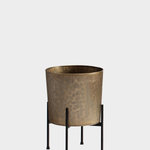
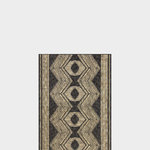
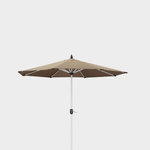
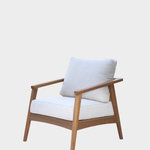






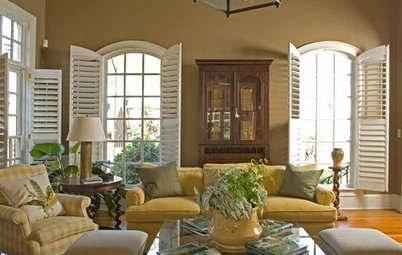
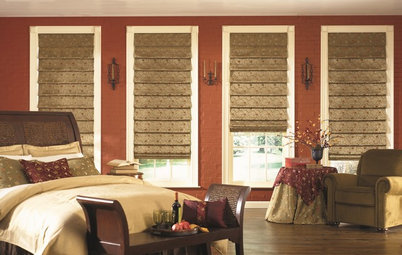
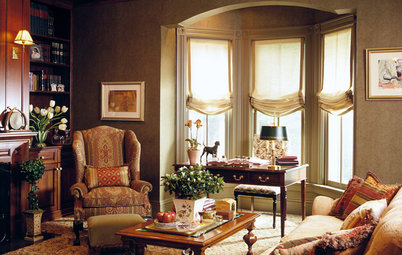
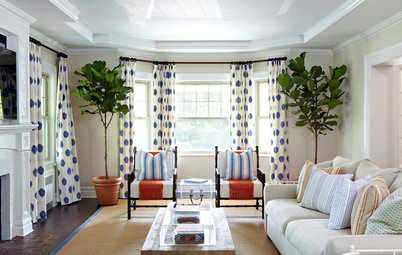
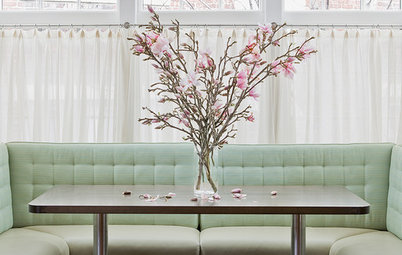
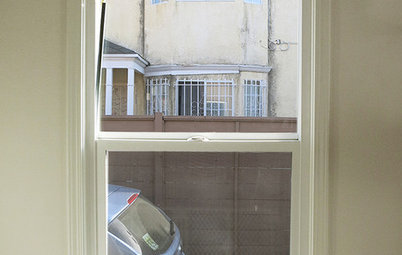
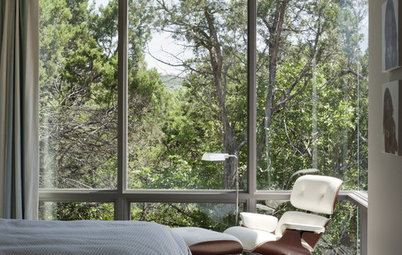
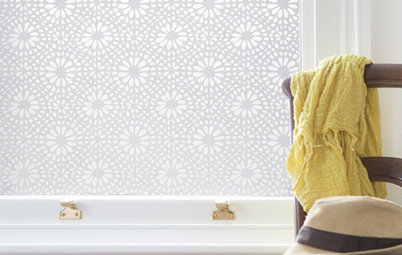
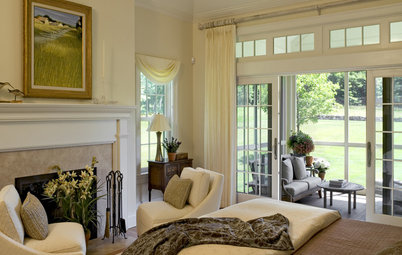
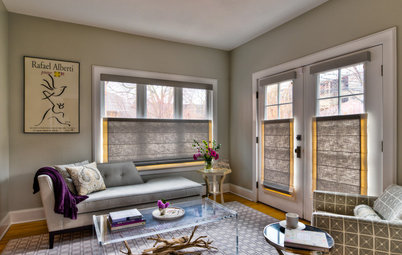
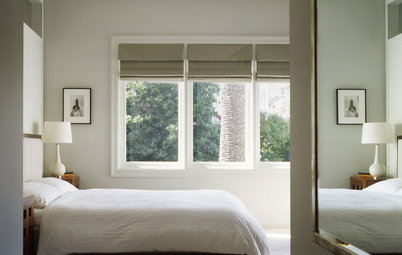
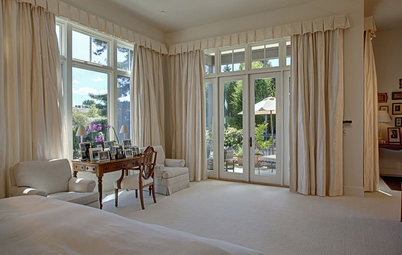
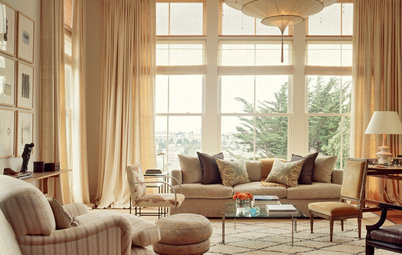
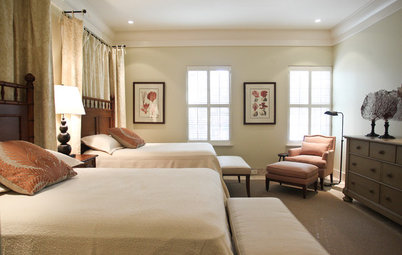






Blinds. Blinds have individual slats, or vanes, that can be tilted open and closed by turning a wand or tilt cords on one side of the blind and lifted and lowered with a cord on the other side. Similar to cordless shades, cordless blinds are operated by pushing the bottom rail up by hand into the upper headrail; they’re not truly cordless, as there’s a cord mechanism inside the blind that acts like a pulley system. The strings that hold the blind together are called a string ladder or braided ladder.
The wood blinds seen here with 2-inch-wide louvers are from The Shade Store and are available in a variety of renewably sourced woods and finishes.
A word about cords. Because lift cords on blinds can be a strangulation hazard for infants and children, the Window Covering Manufacturers Association in 2018 announced a safety standard that requires that new off-the-shelf window covering products be manufactured without long, dangling control cords. Some custom-made products are exempt because corded products are needed by some consumers, such as the elderly and those with disabilities.
Find a window covering professional near you